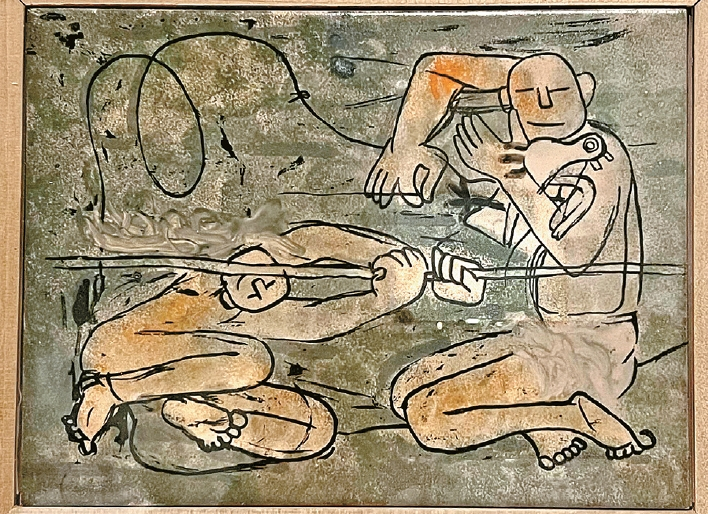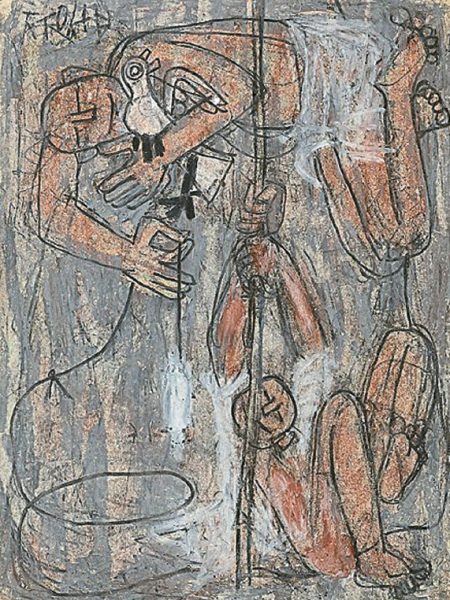The Los Angeles County Museum of Art (LACMA) has acknowledged that some of the Korean artworks donated by Chester Chang, which were on display from February 25 to June 30, may have been forgeries and has canceled a planned publication of the collection.
On June 26, LACMA hosted a discussion with four Korean art experts regarding the “Korean Treasures” exhibition.
In 2021, LACMA received a donation of 100 paintings, ceramics, and celadons from Chester Chang and his son Cameron Chang, and selected 35 of them for the “Korean Treasures From The Chester And Cameron Chang Collection” exhibition. The works included pieces by notable artists such as Park Soo-keun and Lee Jung-seob.

Shortly after the exhibition opened, the JoongAng Ilbo reported suspicions that some works by Park and Lee were forgeries. Following these allegations, LACMA received inquiries from the Park Soo-keun Institute, the Galleries Association of Korea, and the Korean Cultural Center LA. The JoongAng Ilbo is a leading Korean newspaper affiliated with the Korea Daily.
In response, LACMA invited Korean experts to discuss the matter, marking the first time an American museum has done so. LACMA covered the costs, totaling over 15 million won (approximately $10,840), including travel expenses.
The experts raised suspicions about four paintings by Lee Jung-seob and Park Soo-keun, as well as several paintings and ceramics from the Joseon Dynasty. The meeting lasted nearly 10 hours, exceeding the original eight-hour schedule.

LACMA’s Stephen Little, Head of the Chinese, Korean, and South & Southeast Asian Department, who organized the exhibition participated in the meeting along with four invited Korean experts: Dong-guk Lee, Director of the Gyeonggi Provincial Museum; Hyun-sun Tae, Senior Researcher at the Leeum Museum of Art’s Collections Research Department; Sun-pyo Hong, Professor Emeritus at Ewha Womans University; and Sun-hee Kim, former Director of the Busan Museum of Art.
The experts provided detailed analyses, including comparisons of the exhibited works with original images. Hong pointed out spatial arrangement issues and suspicious signatures in Park Soo-keun’s paintings, while noting differences in the portrayal of bulls in Lee Jung-seob’s work. Lee Jung-seob’s “Children Playing on a Pole” was found to be a forgery, with “Crawling Children” transformed from a vertical painting into an unsigned horizontal painting.
Questions were also raised about the authenticity of ceramics. Five Korean ceramics experts determined that a purported 12th-century celadon was a mid-20th-century imitation, and most of the white porcelain on display was also from the mid-20th century or later. Lee stated that the exhibition lacked A-grade pieces, with most rated C to D.
Little acknowledged showing images of the modern paintings to a Korean museum director, who suggested further research was needed. This raised concerns about LACMA’s verification process.
LACMA Director Michael Govan emphasized that the exhibition was intended as a tribute to the donor and announced the cancellation of the planned publication. On March 4, LACMA had held a special lecture confirming the authenticity of the paintings through scientific methods and research.
The failure to properly verify the artworks raises significant questions about LACMA’s credibility and the value of Chester Chang’s donation.
BY GEUNYOUNG KWON, GYEONGEUN PARK, HOONSIK WOO
[young@joongang.co.kr, park.gyeongeun@koreadaily.com]




